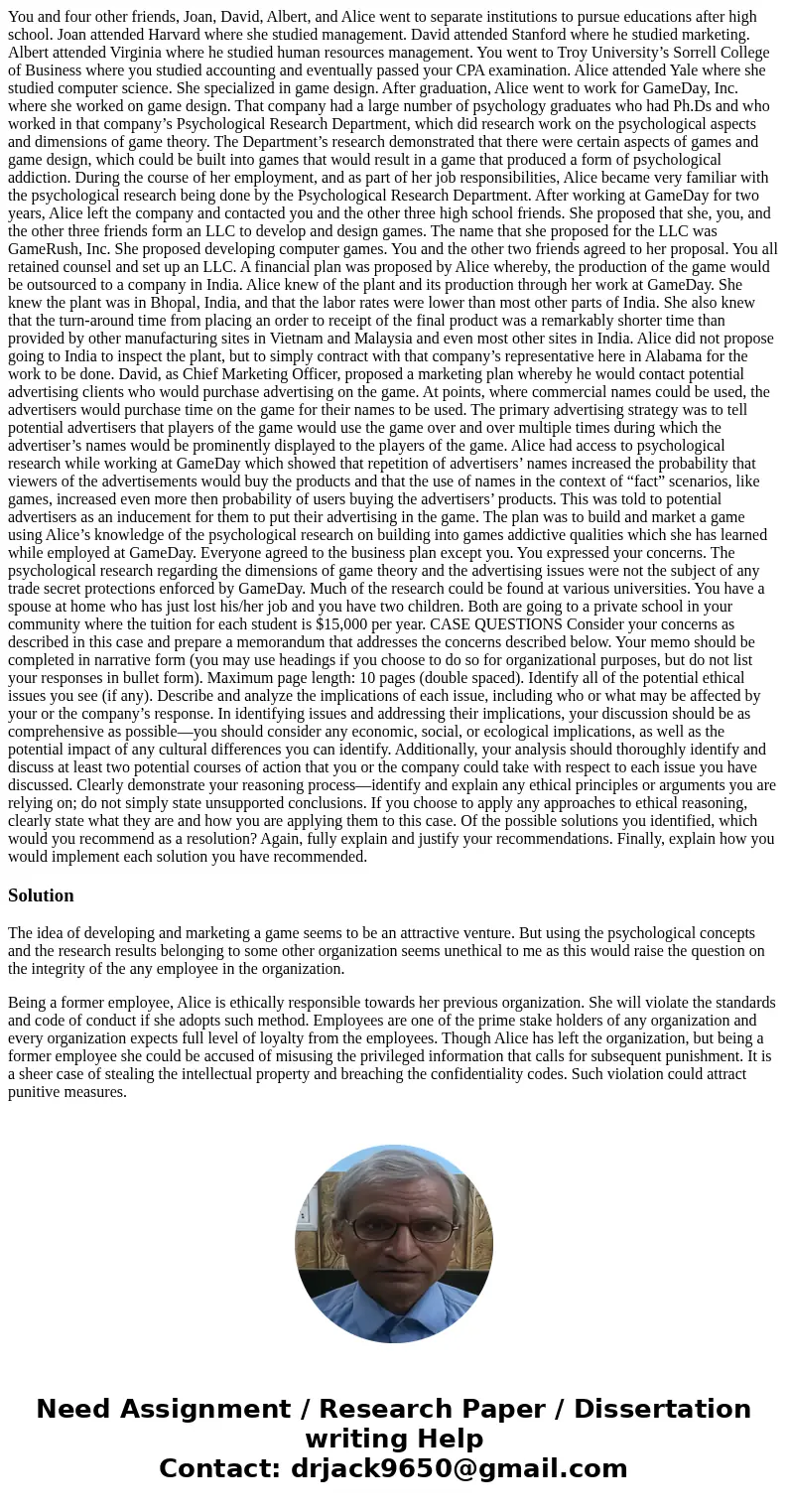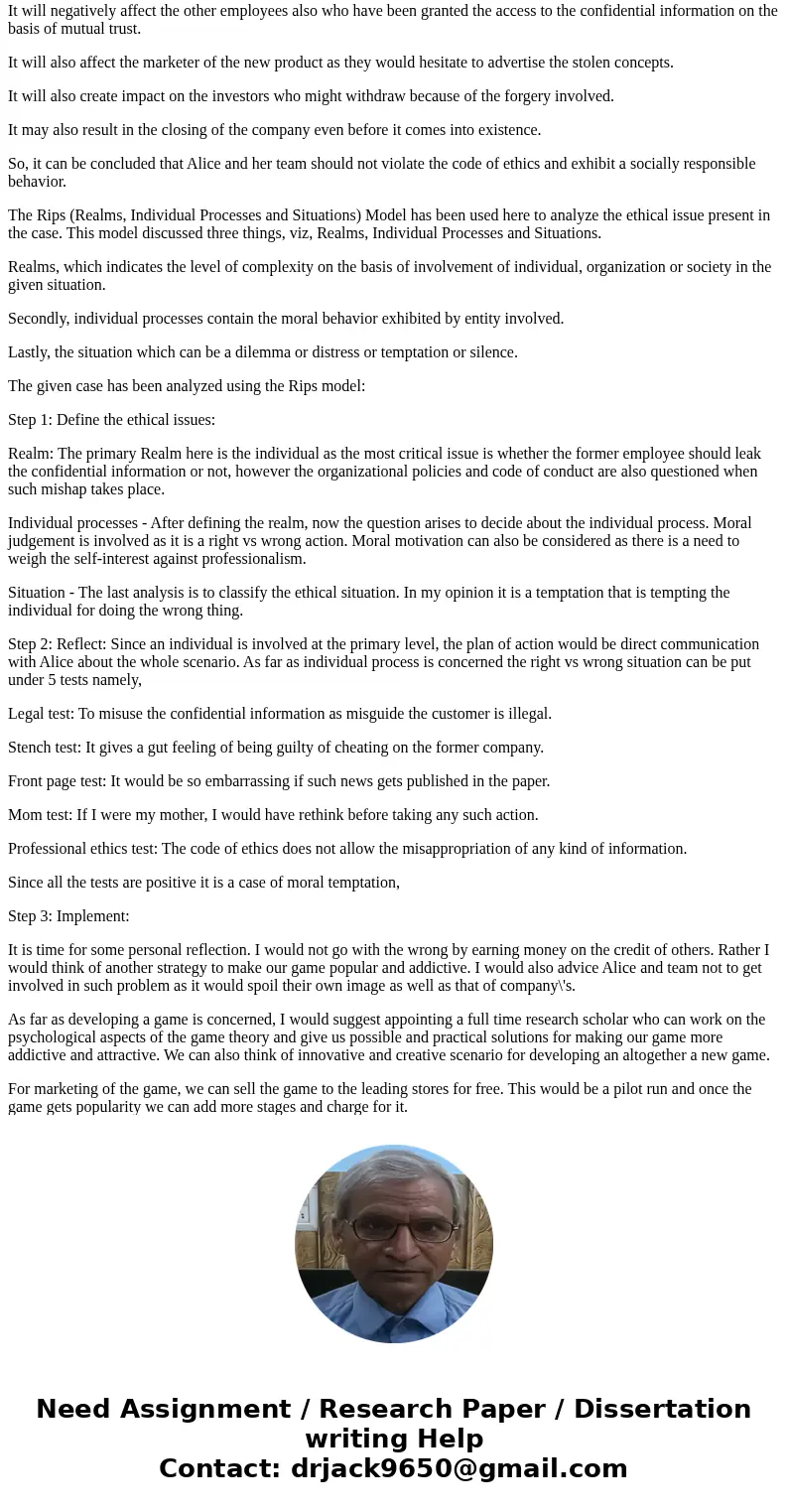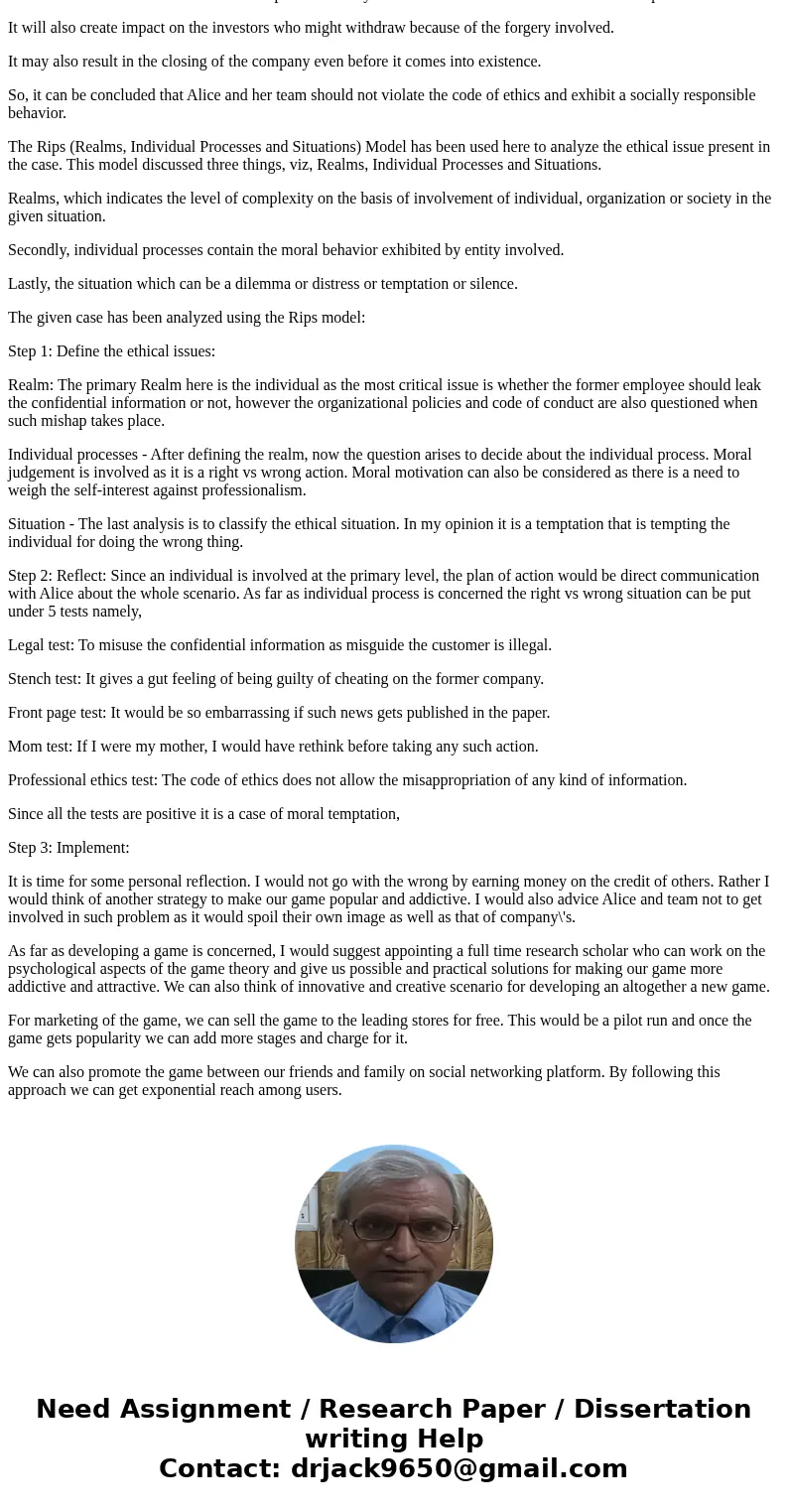You and four other friends Joan David Albert and Alice went
You and four other friends, Joan, David, Albert, and Alice went to separate institutions to pursue educations after high school. Joan attended Harvard where she studied management. David attended Stanford where he studied marketing. Albert attended Virginia where he studied human resources management. You went to Troy University’s Sorrell College of Business where you studied accounting and eventually passed your CPA examination. Alice attended Yale where she studied computer science. She specialized in game design. After graduation, Alice went to work for GameDay, Inc. where she worked on game design. That company had a large number of psychology graduates who had Ph.Ds and who worked in that company’s Psychological Research Department, which did research work on the psychological aspects and dimensions of game theory. The Department’s research demonstrated that there were certain aspects of games and game design, which could be built into games that would result in a game that produced a form of psychological addiction. During the course of her employment, and as part of her job responsibilities, Alice became very familiar with the psychological research being done by the Psychological Research Department. After working at GameDay for two years, Alice left the company and contacted you and the other three high school friends. She proposed that she, you, and the other three friends form an LLC to develop and design games. The name that she proposed for the LLC was GameRush, Inc. She proposed developing computer games. You and the other two friends agreed to her proposal. You all retained counsel and set up an LLC. A financial plan was proposed by Alice whereby, the production of the game would be outsourced to a company in India. Alice knew of the plant and its production through her work at GameDay. She knew the plant was in Bhopal, India, and that the labor rates were lower than most other parts of India. She also knew that the turn-around time from placing an order to receipt of the final product was a remarkably shorter time than provided by other manufacturing sites in Vietnam and Malaysia and even most other sites in India. Alice did not propose going to India to inspect the plant, but to simply contract with that company’s representative here in Alabama for the work to be done. David, as Chief Marketing Officer, proposed a marketing plan whereby he would contact potential advertising clients who would purchase advertising on the game. At points, where commercial names could be used, the advertisers would purchase time on the game for their names to be used. The primary advertising strategy was to tell potential advertisers that players of the game would use the game over and over multiple times during which the advertiser’s names would be prominently displayed to the players of the game. Alice had access to psychological research while working at GameDay which showed that repetition of advertisers’ names increased the probability that viewers of the advertisements would buy the products and that the use of names in the context of “fact” scenarios, like games, increased even more then probability of users buying the advertisers’ products. This was told to potential advertisers as an inducement for them to put their advertising in the game. The plan was to build and market a game using Alice’s knowledge of the psychological research on building into games addictive qualities which she has learned while employed at GameDay. Everyone agreed to the business plan except you. You expressed your concerns. The psychological research regarding the dimensions of game theory and the advertising issues were not the subject of any trade secret protections enforced by GameDay. Much of the research could be found at various universities. You have a spouse at home who has just lost his/her job and you have two children. Both are going to a private school in your community where the tuition for each student is $15,000 per year. CASE QUESTIONS Consider your concerns as described in this case and prepare a memorandum that addresses the concerns described below. Your memo should be completed in narrative form (you may use headings if you choose to do so for organizational purposes, but do not list your responses in bullet form). Maximum page length: 10 pages (double spaced). Identify all of the potential ethical issues you see (if any). Describe and analyze the implications of each issue, including who or what may be affected by your or the company’s response. In identifying issues and addressing their implications, your discussion should be as comprehensive as possible—you should consider any economic, social, or ecological implications, as well as the potential impact of any cultural differences you can identify. Additionally, your analysis should thoroughly identify and discuss at least two potential courses of action that you or the company could take with respect to each issue you have discussed. Clearly demonstrate your reasoning process—identify and explain any ethical principles or arguments you are relying on; do not simply state unsupported conclusions. If you choose to apply any approaches to ethical reasoning, clearly state what they are and how you are applying them to this case. Of the possible solutions you identified, which would you recommend as a resolution? Again, fully explain and justify your recommendations. Finally, explain how you would implement each solution you have recommended.
Solution
The idea of developing and marketing a game seems to be an attractive venture. But using the psychological concepts and the research results belonging to some other organization seems unethical to me as this would raise the question on the integrity of the any employee in the organization.
Being a former employee, Alice is ethically responsible towards her previous organization. She will violate the standards and code of conduct if she adopts such method. Employees are one of the prime stake holders of any organization and every organization expects full level of loyalty from the employees. Though Alice has left the organization, but being a former employee she could be accused of misusing the privileged information that calls for subsequent punishment. It is a sheer case of stealing the intellectual property and breaching the confidentiality codes. Such violation could attract punitive measures.
It will negatively affect the other employees also who have been granted the access to the confidential information on the basis of mutual trust.
It will also affect the marketer of the new product as they would hesitate to advertise the stolen concepts.
It will also create impact on the investors who might withdraw because of the forgery involved.
It may also result in the closing of the company even before it comes into existence.
So, it can be concluded that Alice and her team should not violate the code of ethics and exhibit a socially responsible behavior.
The Rips (Realms, Individual Processes and Situations) Model has been used here to analyze the ethical issue present in the case. This model discussed three things, viz, Realms, Individual Processes and Situations.
Realms, which indicates the level of complexity on the basis of involvement of individual, organization or society in the given situation.
Secondly, individual processes contain the moral behavior exhibited by entity involved.
Lastly, the situation which can be a dilemma or distress or temptation or silence.
The given case has been analyzed using the Rips model:
Step 1: Define the ethical issues:
Realm: The primary Realm here is the individual as the most critical issue is whether the former employee should leak the confidential information or not, however the organizational policies and code of conduct are also questioned when such mishap takes place.
Individual processes - After defining the realm, now the question arises to decide about the individual process. Moral judgement is involved as it is a right vs wrong action. Moral motivation can also be considered as there is a need to weigh the self-interest against professionalism.
Situation - The last analysis is to classify the ethical situation. In my opinion it is a temptation that is tempting the individual for doing the wrong thing.
Step 2: Reflect: Since an individual is involved at the primary level, the plan of action would be direct communication with Alice about the whole scenario. As far as individual process is concerned the right vs wrong situation can be put under 5 tests namely,
Legal test: To misuse the confidential information as misguide the customer is illegal.
Stench test: It gives a gut feeling of being guilty of cheating on the former company.
Front page test: It would be so embarrassing if such news gets published in the paper.
Mom test: If I were my mother, I would have rethink before taking any such action.
Professional ethics test: The code of ethics does not allow the misappropriation of any kind of information.
Since all the tests are positive it is a case of moral temptation,
Step 3: Implement:
It is time for some personal reflection. I would not go with the wrong by earning money on the credit of others. Rather I would think of another strategy to make our game popular and addictive. I would also advice Alice and team not to get involved in such problem as it would spoil their own image as well as that of company\'s.
As far as developing a game is concerned, I would suggest appointing a full time research scholar who can work on the psychological aspects of the game theory and give us possible and practical solutions for making our game more addictive and attractive. We can also think of innovative and creative scenario for developing an altogether a new game.
For marketing of the game, we can sell the game to the leading stores for free. This would be a pilot run and once the game gets popularity we can add more stages and charge for it.
We can also promote the game between our friends and family on social networking platform. By following this approach we can get exponential reach among users.



 Homework Sourse
Homework Sourse